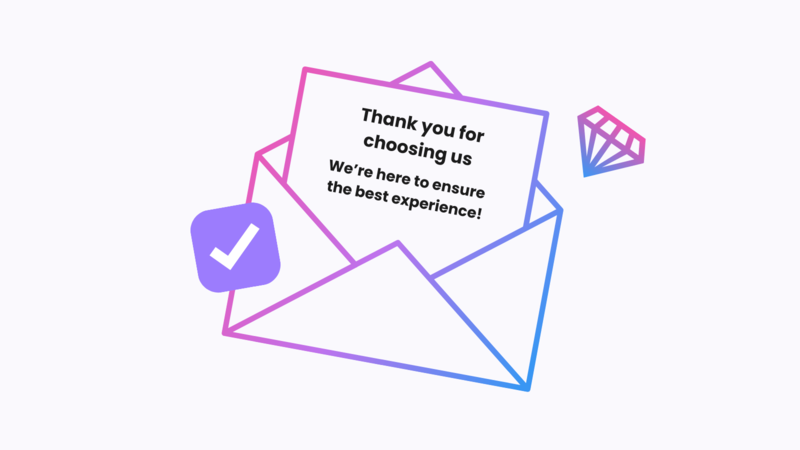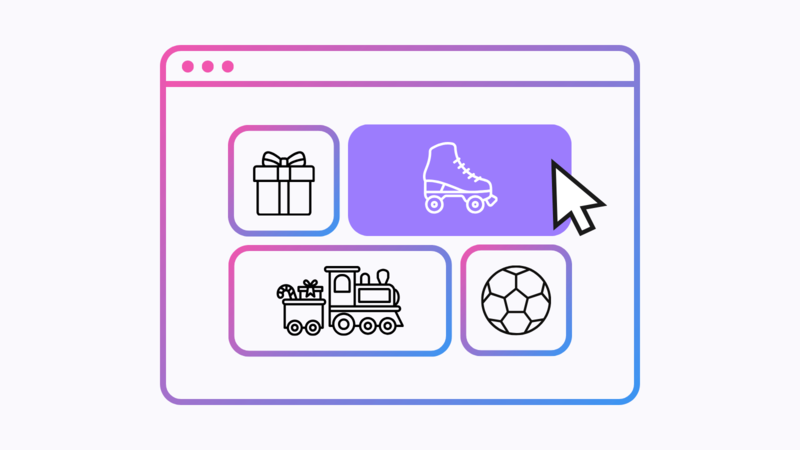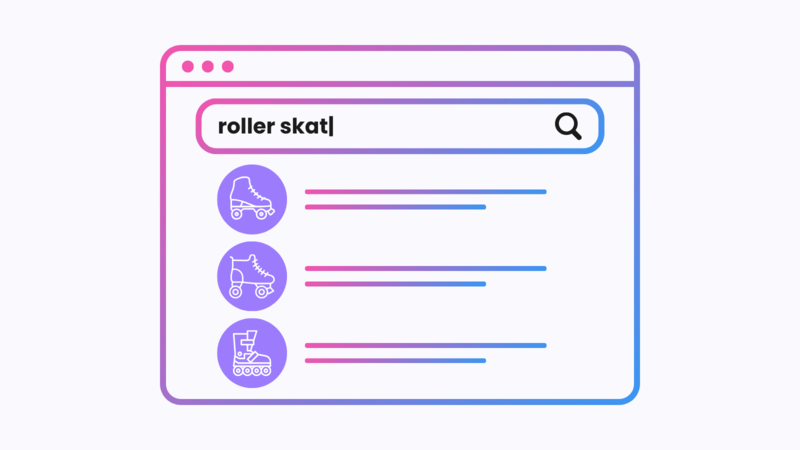It became common business knowledge that an e-commerce website's UX/UI design plays one of the key roles in sales results. The marketing strategy for selling online needs to include best practices and UX/UI design trends to stay competitive in the long run.
At the same time, the e-commerce landscape is evolving unprecedentedly, with customer expectations driving continuous innovation. As we move into 2025, the role of UX/UI design in shaping online shopping experiences has never been more critical. A well-designed Shopify or any e-commerce store is about creating seamless, intuitive, and enjoyable experiences that convert visitors into loyal customers.
In this article, we’ll explore the key UX/UI design trends that will define e-commerce in 2025. We'll focus on how Shopify merchants can leverage these insights to stay competitive. These trends offer a roadmap to enhance user satisfaction, boost sales, and set your brand apart in a crowded market.
Past trends recap
E-commerce has advanced significantly in the last decade, with UX/UI design playing a pivotal role in shaping how consumers shop online. In the early days, basic functionality and desktop-first designs were sufficient to attract customers. Today, the bar has been raised significantly, with users demanding fast, visually appealing, and highly personalized experiences across devices.
In recent years, UX/UI design trends have included, among others, a mobile-first approach, data-based personalization, and a dark mode to reduce eye strain and create sleek aesthetics.
Companies started utilizing consumer behavior insights to adjust preferences toward convenience, simplicity, and emotional connection. Micro-animations appeared, adding subtle interactive elements to enhance navigation and drive engagement.
Simultaneously, fast load time and smooth navigation were priorities, not only for customers but also for search engine optimization.
The same UX/UI website design trends apply to Shopify, where customization has become more prominent. In recent years, agile development has supported the growth of e-commerce stores built on the platform, allowing for rapid implementation and continuous iteration of new features.
As we approach 2025, understanding where UX/UI design has been and where it’s heading will help e-commerce merchants make informed decisions to meet and exceed customer expectations.
E-commerce UX/UI design trends for 2025
1. Go further with personalization
Consumer expectations around personalization are high—as many as 74% of customers feel frustrated when website content is not personalized.
In turn, from a business point of view, according to McKinsey’s data, there’s a correlation between a company's growth rate and its use of personalization to generate revenue. Personalization additionally drives performance and better customer outcomes. Their studies show that companies that grow faster drive 40 percent more revenue from personalization than slower-growing companies.
AI and machine learning continuously advance personalization. In the coming years, we can expect dynamic user interfaces that adapt in real-time based on user behavior, preferences, and browsing history. For example, e-commerce websites may display different layouts or product arrangements for each visitor, ensuring a more relevant and engaging experience.
Micro-personalization—customized recommendations, localized offers, and user-specific product bundles—will become essential for meeting customer expectations.
Concurrently, this needs a balanced approach to show customers that you care about their privacy preferences and cyber safety. More and more companies are reducing reliance on third-party data and moving to collect data directly.
Include prepared apps for chatbots as personal shopping assistants or AI-powered personalized recommendation engines in the e-commerce design. Always be transparent about collecting and using data to maintain customers' trust and comply with privacy laws.
2. Bet on inclusive, accessible, and emotionally intelligent design
Besides legal regulations reinforcing digital accessibility (EAA, ADA), tech influencers are also exerting ongoing pressure to ensure that UX/UI designs address the needs of all society members.
As digital inclusivity gains importance, e-commerce platforms will prioritize universal usability. Accessible designs, such as keyboard-friendly navigation, contrast optimization, and screen reader support, will be non-negotiable.
Explore ADA&WCAG website compliance and check what needs to be improved in Netkodo's Accessibility Checker.
It’s also about voice-activated interfaces included in the design. By integrating with AI-powered assistants like Siri, Alexa, or Google Assistant, e-commerce platforms can enable hands-free shopping experiences. Users will browse, compare, and purchase products using simple voice commands, making shopping more accessible and convenient.
On the other hand, there’s emotionally intelligent design manifesting in empathetic and solution-oriented copywriting details and error messages, positive feedback to users, soothing color palettes, or gentle animations that make users feel at home.
Emotionally intelligent design is a foundation for creating user-centric experiences, especially for younger audiences. Acknowledging users’ emotions through designs supports building more meaningful and long-term relationships and increases user satisfaction.

Additionally, catering to neurodiverse audiences with features like adjustable animation speeds and focus modes will ensure all users can interact comfortably. Dark mode becomes a necessity, not a bonus. Voice search optimization and NLP(natural language processing)-driven interfaces will further enhance accessibility.
3. Incorporate a minimalist but interactive design
Minimalism remains a timeless trend, but in 2025 it will evolve to incorporate interactive elements. Clean layouts with ample white space, bold typography, and concise content will dominate.
The idea is to make it easy for users to navigate without distractions and emphasize sleekness and sophistication. This approach is perfect for projects that want to convey clarity, like online stores where product photos take center stage. A minimalistic approach can instantly capture the user’s attention in critical spots by highlighting what’s important.
Micro-interactions—subtle animations or visual effects triggered by user actions—will add interactivity to engage users without overwhelming the e-commerce application design. For example, hover effects, progress indicators, or add-to-cart animations create engaging yet intuitive experiences.
Animated icons have become a trend. As inherent elements of design that instantly convey meaning or intent, they can enhance visual communication, capture attention, make interactions more intuitive, and bring energy along with engagement to user interface design.
The secret of standing out with minimalism is to incorporate it with personality. Instead of bombarding the user with your brand, stand out from the crowd in a creative, subtle way.
4. Go beyond mobile-first design
It is estimated that in 2028, two-thirds of all online purchases will happen on mobile devices. Mobile-first design is not a new trend; it’s a progressing trend.
While mobile commerce remains dominant, e-commerce designs are tailored for seamless interactions on any device. Progressive Web Apps (PWAs) and ultra-responsive layouts ensure fast, app-like experiences in mobile browsers regardless of the user's tool.
Include gesture-based navigation, thumb-friendly interfaces, and features like one-click checkout to flow further alongside this trend to simplify mobile shopping, reduce friction, and boost conversions.
5. Engage customers through gamification
Gamification as a buzzword was present for years, but in 2025, it's finally taking place in UX/UI design, especially for e-commerce, including Shopify.
Gamification will be widely adopted to engage users and boost loyalty. Features like spin-to-win discount wheels, daily challenges, reward programs, and progress bars for unlocking perks will make shopping experiences more interactive and rewarding. A sense of accomplishment and competition is deeply engaging and keeps users motivated.
Embedding storytelling elements into workflows invites users to participate actively in a story rather than be passive customers. By blending entertainment with utility, gamification will increase user retention and encourage repeat purchases.

6. Cross-platform UX/UI design for omnichannel experiences
More consumers are starting their buyer journeys in places other than search engines. For example, social commerce is estimated to drive one in five online sales by 2025.
Ensuring consistent UX/UI e-commerce design across all consumer touchpoints and delivering a seamless experience regardless of the channel is a foundation for building brand recognition and trust.
Users expect smooth experiences, consistent features, and content across all touchpoints on every device and platform. Meeting those expectations is a response to the progressive omnichannel trend.
7. Users look for safety in authenticity
The development of artificial intelligence, which has led to an explosion of deepfakes and an increasing number of really creative scammers on the internet, has caused more skepticism in users than ever before.
It brings more trust issues with new apps and websites, which is especially relevant for e-commerce sites.
As a result, it became even more important to emphasize trustworthy image and user safety in the online store's UX/UI design. A lot can be done, and it involves thoughtful integration of visual, functional, and communication strategies.
It is worth paying attention to clearly visible trust signals (e.g., certificates, payment provider logos, reviews, and ratings). Use clear and transparent communication by detailed product information and highlighting links to refund, shipping, and privacy policies.
Take care of secure interaction in the e-commerce design by encouraging strong password creation with validation tools and displaying messages about data protection practices. Emphasize secure payment options and show related messages during the checkout process.
Use social proof and error-free, reliable performance to further build the feeling of security for users.
8. Get inspired by Japanese tradition
Inspired by the Japanese tradition of compartmentalized meals, the Bento Box Design concept brings clarity and organization to UX/UI layouts.
Its modern, visually appealing style breaks content into neatly arranged bite-sized sections, delivering users lots of information at once without overwhelming them.

At the same time, bento grids are flexible and ensure optimal display across all devices and platforms. This segmented layout makes sections more manageable to navigate and customize.
It's a great fit for product pages, comparisons, online catalogs, dashboards, or any content that requires structure.
9. Shorter path to the desired product
Modern e-commerce UX/UI designs include live search functionality to eliminate the need for page loads and deliver a better experience by simply making finding products easier. This feature allows users to see search results in real-time as they type in the search bar.
It enhances UX by providing instant feedback during searches and shortening the time customers spend finding what they want, leading to a rise in conversion rates.

10. Enhance the browsing product experience
Finding the desired product can be a time-consuming and frustrating experience, especially on an e-commerce site with a large inventory. This can discourage users from continuing their purchases.
Hence, the e-commerce design trend emerged to enhance filtering controls and enable users to sort through extensive inventories efficiently. Implement as many intuitive filters as possible based on attributes such as size, color, brand, price range, and dimensions–anything your customers can use to find exactly what they want without digging through irrelevant items.
Applying 2025 UI/UX design trends in Shopify
In the case of Shopify website design, many apps and integrations support reshaping the digital shopping experience to help merchants meet modern expectations and differentiate themselves in a competitive market.
Deliver exceptional experience
Hyper-personalization can be achieved by leveraging apps and AI-driven tools to deliver unique experiences that make each customer feel valued. This includes dynamic content based on browsing history or preferences, personalized product recommendations and curated collections, and location-based features, like localized currency and delivery options.
Additionally, Shopify’s integrated AI tools deliver predictive analytics to understand user behavior and optimize design elements accordingly. These features save time, improve accuracy, and enhance customer satisfaction, leading to higher conversion rates.
Another way to enhance users' experience is to include chatbots in Shopify’s UX/UI design. According to Tidio's study, 88% of customers had at least one conversation with a chatbot within the past year. The chatbot market is expected to grow to $8.97 billion in 2025. Chatbots are becoming the preferred choice for delivering customer support in today's world.
Shopify store owners can also gain extra points in consumers' eyes by integrating AR technologies that further elevate the shopping journey. This technology transforms how customers interact with products online, enabling interactive 3D product models for detailed views, VR showrooms that let users "walk through" a digital store, and augmented reality for virtual try-ons of clothing, accessories, or furniture.
Make it accessible and inclusive
Creating accessible Shopify designs is easier thanks to accessibility features built into Shopify themes, which empower merchants to design for all audiences. Introduce flexible font sizes, high-contrast modes, and enhanced accessibility for visually impaired and disabled users (e.g., keyboard navigation and screen reader compatibility).
Engage users with micro-interactions and animations
Lightweight animations available in Shopify’s design tools ensure smooth performance without slowing down websites.
Small but impactful animations will help create engaging user experiences in Shopify site design. For example, you could try subtle loading animations to reduce perceived wait times or animated progress indicators during checkout to guide users.
Enhance checkout experience
If you haven't implemented it yet–2025 is the time. A smooth checkout experience directly impacts cart abandonment rates and customer retention.
Shopify’s updates to the checkout process are focused on reducing friction and boosting sales. They enable a seamless purchase process with one-click checkout, post-purchase upsells to boost average order value without interrupting the user journey, and localized payment options to cater to global audiences with diverse payment preferences.
Adopt advanced security and privacy features into the design
E-commerce sites must efficiently respond to increasing cybersecurity threats and legal privacy regulations. Data encryption, two-factor authentication, and transparent privacy policies are becoming a standard.
In an increasingly dangerous environment, it is equally vital for Shopify's design to reflect efforts to ensure privacy and security, which will help build customer trust. You can get creative and incorporate it in your way or take our advice from trend #7.

Meet your customers on social media
Shopify offers integration with Facebook, Instagram, and TikTok to embrace the social commerce trend. This allows vendors to meet customers where they are by merging social interactions with shopping for a seamless social purchasing experience.
It's also a significant opportunity to promote your products to numerous potential customers, generate launch buzz, and build anticipation for exclusive drops.
Conclusion
Some e-commerce and Shopify UX/UI design trends are entirely new, some continue long-standing trends, and many grow out of earlier trends.
The market is constantly developing, as are customer expectations and ways of satisfying them. Staying competitive in this environment requires embracing modern technology, engaging customers, ensuring a safe and smooth experience, and boosting loyalty—just a few aspects of this complex task.
Therefore, elevating the online store experience through UX/UI design is work for a team of e-commerce design and development experts.
Sources:
- https://burstcommerce.com/guides/e-commerce-stats/
- https://www.shopify.com/blog/consumer-trends
- https://www.shopify.com/enterprise/blog/online-shopping-trends-ecommerce
- https://dartstudios.medium.com/actual-ui-design-trends-to-consider-in-2025-d7b1e191faab
- https://medium.com/@rodolphe-balay-iterates/ui-ux-design-trends-for-2025-c591664ac8f6
- https://www.lummi.ai/blog/ui-design-trends-2025
- https://www.designstudiouiux.com/blog/ui-ux-trends/
- https://explodingtopics.com/blog/ux-design-trends
- https://instapage.com/blog/personalization-statistics
- https://www.mckinsey.com/capabilities/growth-marketing-and-sales/our-insights/the-value-of-getting-personalization-right-or-wrong-is-multiplying
- https://www.statista.com/statistics/1449284/retail-mobile-commerce-revenue-worldwide/
- https://www.statista.com/statistics/1252481/social-buyers-worldwide-countries/
- https://www.researchnester.com/reports/chatbot-market/5567
- https://www.tidio.com/blog/chatbot-statistics/
